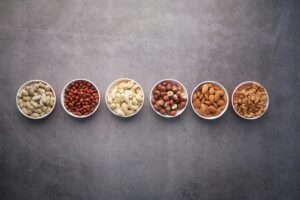
Protein After 40: How Much Do You Really Need?
So, you’re over 40, hitting the gym, keeping up with hobbies, walking the dog, chasing kids (or grandkids), and wondering if you’re getting enough protein to keep up with all. Well, it’s a good question.
As we age, our bodies start to lose muscle mass and protein becomes more important than ever—especially if you’re active and want to maintain strength, energy, and recovery.
Let’s break it down.
Why Protein Matters More After 40
- After age 30, we start losing 3–8% of muscle mass per decade.
- By 40+, we need more protein per kg of body weight than younger adults to stimulate the same level of muscle protein synthesis.
- It helps maintain metabolism, bone health, and physical function.
- Recovery from workouts also slows down a bit with age—protein helps speed that up.
So How Much Do You Actually Need?
The old recommendation is 0.8g/kg of body weight per day — just enough to prevent deficiency, not enough for active people. So not really ideal.
Current recommendations for active adults over 40:
- 1.2 – 2.0 grams per kg of body weight per day is recommended.
- That’s about 90–130g per day for a 70kg person, depending on goals.
- 70 x 1.2 = 84 Or 70 x 2 =140
If you’re trying to build or maintain muscle, lean toward the higher end. If a person is excessively over weight this will need to be tweaked alongside a health practitioner. Although generally higher protein is recommended for weight loss.
What About Men vs Women?
Both need more protein as they age—but there are a few differences.
Women:
- Tend to have less total muscle mass than men, but protein is crucial for maintaining lean mass, especially through menopause.
- Oestrogen declines can increase muscle breakdown—protein can help reduce this.
- Aim for 1.2–1.6 g/kg/day, or even up to 2.0g if lifting regularly.
Men:
- Also lose muscle over time, and testosterone starts to drop too.
- Maintaining strength and mass becomes harder after 40.
- Regular training + protein can slow that decline.
- Aim for 1.4–2.0 g/kg/day, especially if doing resistance training.
What Kind of Protein?
- Animal proteins (like eggs, chicken, fish, dairy) are complete and more easily absorbed.
- Plant proteins (like lentils, tofu, quinoa, beans) can work too—just eat a variety to cover all amino acids.
- Whey protein is a popular and effective supplement post-workout.
- Spread your intake throughout the day for best results—30g per meal is a great goal.
Bonus Tips
- Don’t just chug a protein shake after a workout—include protein in all meals.
- Add a high-protein snack before bed to help overnight muscle repair.
- Eat real foods, avoid sugar & trans fats, in other words NO JUNK
| Protein Source | Serving Size | Protein (g) |
| Chicken breast (cooked) | 100g (3.5 oz) | 31g |
| Beef (lean, cooked) | 100g | 26g |
| Eggs | 1 large | 6g |
| Greek yoghurt (plain) | 170g (6 oz) | 17g |
| Tofu (firm) | 100g | 10g |
| Lentils (cooked) | 1 cup (198g) | 18g |
| Almonds | 28g (about 23 almonds) | 6g |
| Peanut butter | 2 tbsp (32g) | 8g |
| Canned tuna | 100g (3.5 oz) | 25g |
| Quinoa (cooked) | 1 cup (185g) | 8g |
| Cottage cheese (low-fat) | 1/2 cup (185g) | 14g |
| Tempeh | 100g | 19g |
| Chickpeas (cooked) | 1 cup (164g) | 15g |
– Nick





